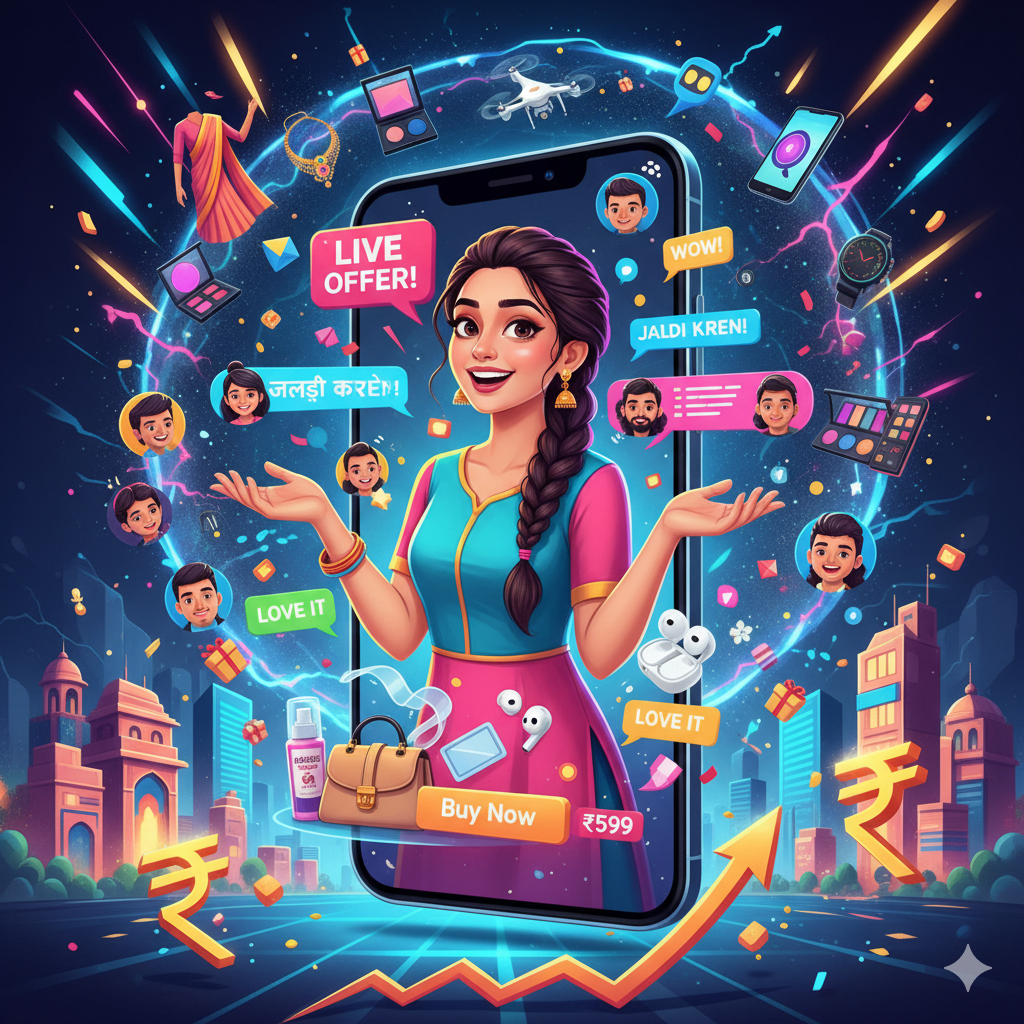In recent years, live commerce has emerged as one of the fastest-growing trends in the Indian digital economy. What started as an innovative shopping format in China is now making waves across India, where consumers are increasingly seeking new ways to interact with brands, creators, and products online. This combination of live video streaming with instant shopping has redefined how people discover, evaluate, and purchase products.
But what exactly is fueling the growth of live commerce in India? The answer lies in a blend of technology adoption, consumer behavior shifts, creator-driven content, and the rise of social commerce ecosystems. Let’s explore the factors driving this rapid adoption.

1. The Digital India Revolution
India’s digital transformation is a primary driver of live commerce. With affordable smartphones, improved 4G/5G internet access, and government-backed initiatives promoting digital payments, millions of Indians have come online in the past decade.
This digital-first generation is highly comfortable with video content and online shopping, making live commerce a natural extension of their habits. The convenience of interacting with sellers in real time and making secure payments within the same platform has removed the barriers that once discouraged online purchases.
2. The Popularity of Short-Form & Video Content
Indian consumers are among the highest consumers of online video in the world. Platforms like YouTube, Instagram, and Moj have transformed entertainment habits, paving the way for video-led shopping experiences.
Live commerce taps into this trend by allowing sellers and influencers to demonstrate products live, answer queries instantly, and create engaging content that feels authentic compared to traditional ads. This trust factor has become a game-changer in converting browsers into buyers.
3. The Rise of the Creator Economy
Creators and influencers play a huge role in fueling live commerce growth. India’s creator economy is expected to cross $2.5 billion by 2025, and these creators are increasingly partnering with brands to host live shopping events.
Unlike traditional celebrity endorsements, creators build personal connections with niche communities. When they recommend a product during a live stream, it feels more like a trusted friend’s suggestion than a sales pitch. This creator-driven commerce is especially effective in categories like fashion, beauty, gadgets, and lifestyle products.
4. Trust & Real-Time Engagement
One of the biggest challenges in Indian e-commerce has been buyer hesitation due to product quality concerns and lack of trust. Live commerce addresses this directly by offering:
- Live product demonstrations (showing texture, size, fit).
- Instant Q&A sessions with sellers.
- Social proof through comments and likes during the stream.
This two-way interaction not only boosts transparency but also builds buyer confidence, leading to higher conversions and fewer product returns compared to traditional e-commerce.
5. Regional Language Content & Tier-2/3 Adoption
Live commerce growth is not limited to metros. With the rise of regional language content, Tier-2 and Tier-3 cities are driving significant adoption.
Consumers in smaller towns are eager to explore new products but often seek personalized guidance before purchasing. Live commerce bridges this gap, offering sellers the ability to connect in local languages, making shopping more relatable and trustworthy.
6. Integration of Payments & Logistics
The seamless integration of UPI-based payments, COD (cash-on-delivery) options, and reliable logistics networks has made live commerce highly scalable in India. Shoppers can enjoy instant checkout during live sessions without leaving the stream, while brands ensure quick delivery to maintain trust.
This infrastructure backbone ensures that live commerce is not just engaging but also convenient and efficient, encouraging repeat purchases.
7. Social Commerce Ecosystems
Social commerce platforms like Meesho, GlowRoad, and Ikibor are creating ecosystems where live commerce thrives. By blending community-driven shopping with influencer-led selling, these platforms encourage group buying, exclusive deals, and social sharing.
This peer-driven influence is particularly strong in India, where recommendations from friends, family, and communities play a crucial role in shopping decisions.
8. Youth-Centric Consumption & Impulse Buying
India’s Gen Z and Millennial population is driving consumption trends. These digital natives value experiences, authenticity, and instant gratification. Live commerce caters perfectly to their preferences by offering:
- Limited-time discounts.
- Interactive entertainment.
- Impulse-buy triggers through flash sales.
The FOMO (fear of missing out) effect created during live sessions further accelerates purchase decisions.
9. Support from Brands & Retailers
Leading brands and retailers are now experimenting with live commerce to increase engagement and sales. From beauty brands hosting virtual product launches to fashion retailers offering try-before-you-buy experiences, businesses see live commerce as a cost-effective marketing and sales channel compared to traditional advertising.
Startups and small businesses also benefit by reaching wider audiences without needing heavy investments in physical stores or large ad campaigns.
The Future of Live Commerce in India
The growth of live commerce in India is no coincidence—it’s fueled by digital adoption, trust-driven interactions, creator influence, and cultural shopping preferences. With the rise of 5G, better AI-powered personalization, and deeper integrations with social platforms, the future of live commerce looks even brighter.
For Indian consumers, it’s not just shopping—it’s shopping as entertainment. And for brands, it’s a golden opportunity to build stronger connections, reduce returns, and drive sales in a highly competitive market.
As the ecosystem matures, live commerce will likely become a mainstream shopping format in India, reshaping the future of e-commerce.
